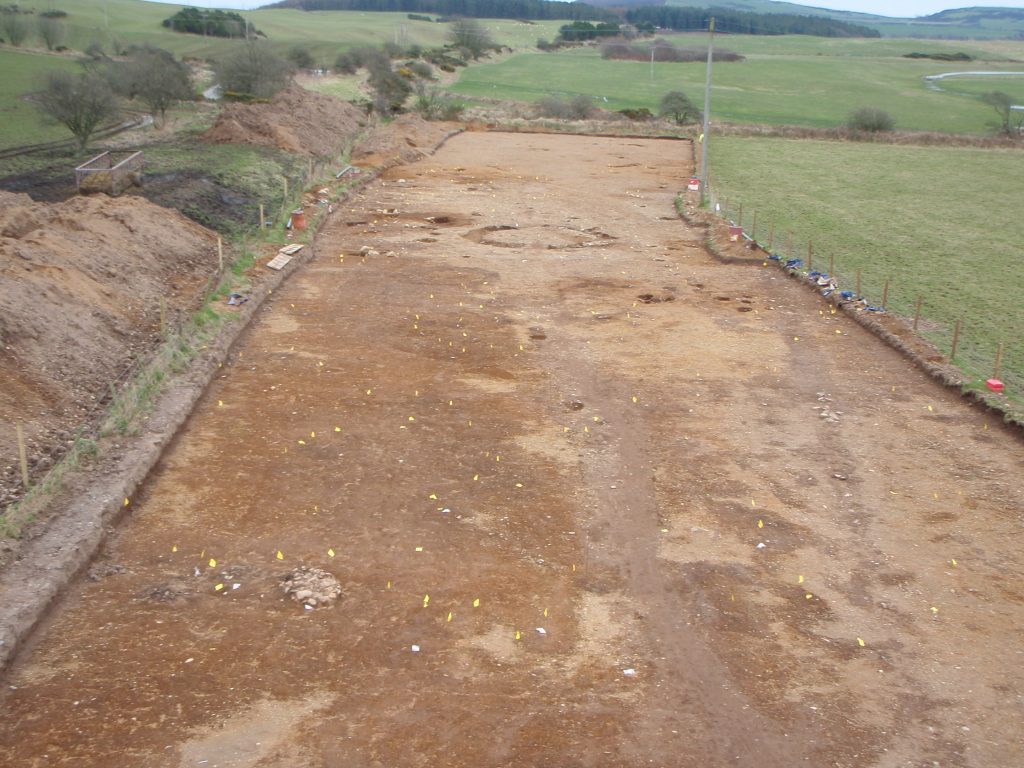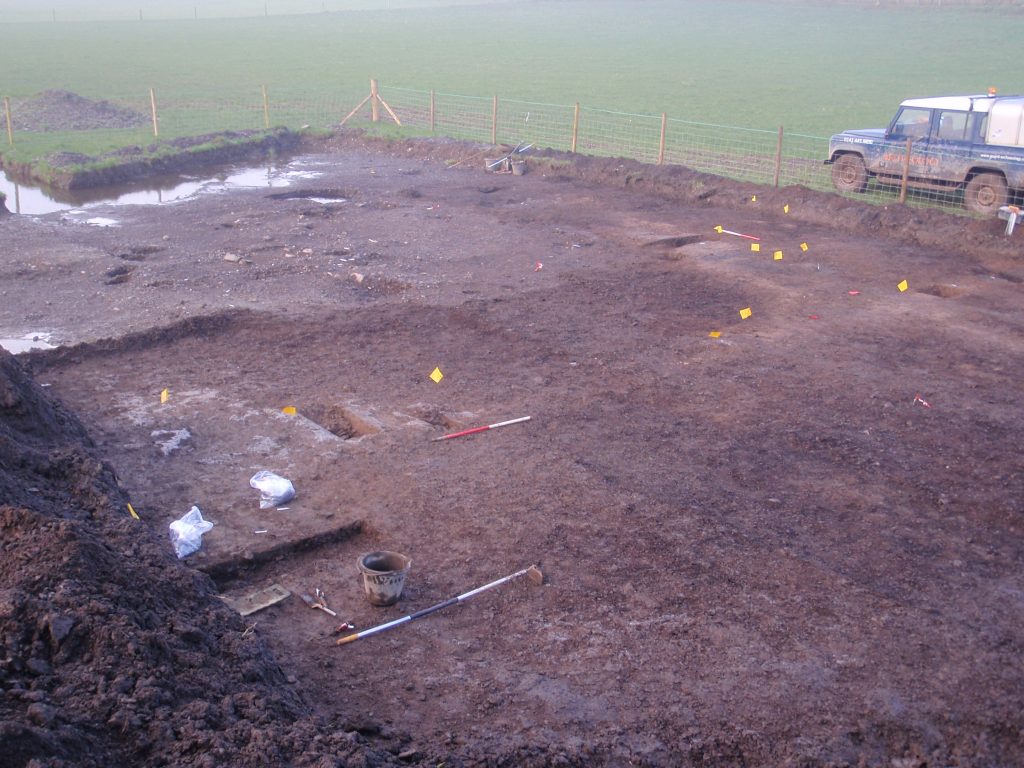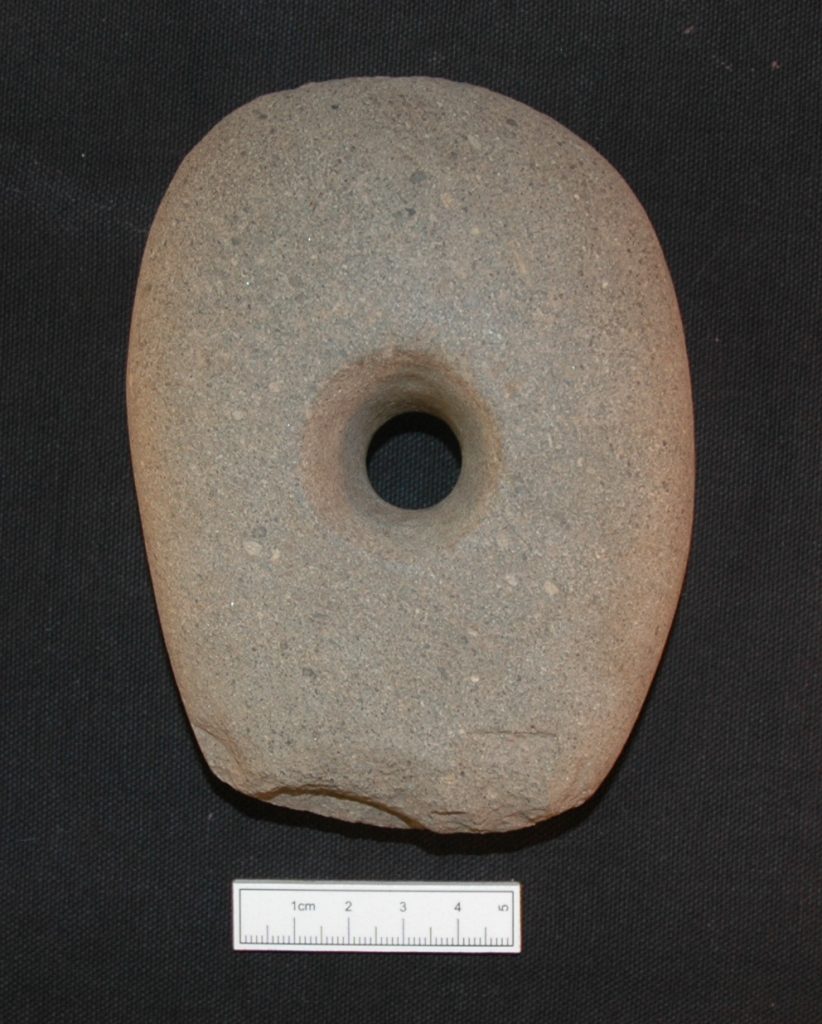
The eleven key areas of archaeological significance comprised a range of Mesolithic (8000-4000 BC), Neolithic (4000 – 2400 BC), Bronze Age (2400 – 700 BC) and Iron Age (700 BC – AD 500) findings.


One of the most interesting results from this phase of work was a Mesolithic settlement revealed at West Challoch to the south-east of Dunragit village. Mesolithic settlements in south-west Scotland are extremely rare and up until our excavations, have consisted solely of scatters of lithic material and hearths but no actual structures. However, a Mesolithic circular structure and associated large pits and ditch gully were encountered during the initial Dunragit evaluation along with a total of 166 fragments of un-stratified lithic material from the topsoil. The Mesolithic house consisted of a sub-circular arc of six post-holes on the south west, with the possible return on the north-east comprising of two post-holes. The area within the structure appeared to be approximately 3 m in diameter creating an internal space of approximately 7 m². The post-holes appeared to be set in four pairs with each pair of posts set approximately 0.4 m apart.

No obvious sign of an occupation layer survived within the interior of the house but a series of sampling grids were laid across its footprint to extract lithic artefacts. Furthermore, two layers of multi-element samples were taken at 0.2 m intervals in the attempt to establish evidence of occupation and differential uses within the structure. No internal hearth was visible within the structure, with the only direct evidence of a hearth a few metres to the north-west. An accumulation of worked lithic and debitage was noted around the north side of the structure concentrated around two of the post-holes. One of the most striking artefacts recovered was a perforated stone adze.of the structure concentrated around two of the post-holes. One of the most striking artefacts recovered was a perforated stone adze.
A series of four preliminary dates were obtained during the excavation for four separate deposits including one posthole, a pit and two layers from the hearth. The calibrated radiocarbon dates ranged between 7056-6825 BC, 6830-6643 BC, 6867-6696 BC and 6849-6656 BC. These demonstrate that this Mesolithic structure is the earliest house discovered in south-west Scotland to date.

But that wasn’t all, the other areas revealed a wealth of other prehistoric activity, including possible Neolithic structures (East Challoch), a Bronze Age cemetery complex (Boreland Cottage Upper), a series of burnt mound sites (Boreland Cottage Lower) and an Iron Age settlement (Myrtle Cottage).
